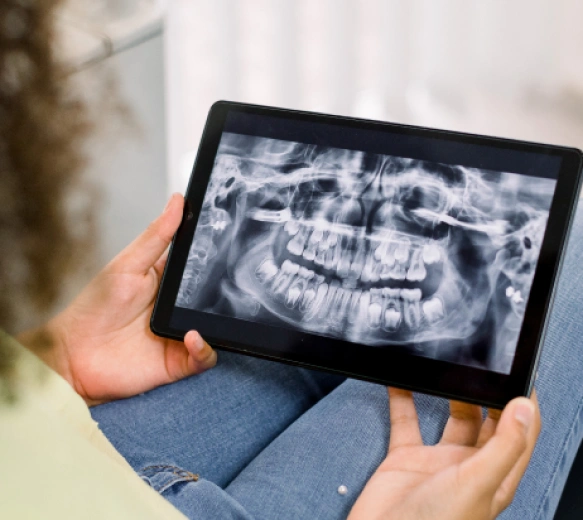
Modern Dentistry Made Easy with Digital Impressions
Because the data is captured directly and immediately, clinicians can review scans on-screen, verify margins and contacts, and re-scan any area that needs refinement before the patient leaves the chair. This direct feedback loop reduces uncertainty and helps ensure the digital model matches what the dentist observes clinically. The outcome is a precise starting point for crowns, bridges, implant restorations, inlays, onlays, and other restorative work.
For patients and providers alike, the transition from physical molds to digital files marks a shift in how impressions are collected and used. The technology emphasizes accuracy, reproducibility, and a streamlined workflow that integrates cleanly with digital design and fabrication systems used in modern dental practices.
Your Comfort and Convenience Come First
One of the most noticeable benefits of digital impressions is patient comfort. Eliminating bulky trays and impression material reduces gag reflex triggers and removes the unpleasant tactile and taste sensations many patients dislike. Shorter chair time and fewer retakes make routine appointments feel more efficient and less stressful.
Digital scans also enhance patient communication. On-screen visualizations let clinicians show patients exactly what is happening in their mouths, explain treatment needs, and discuss proposed restorative designs. This visual approach improves understanding and supports informed decision-making without resorting to technical jargon.
For anxious patients or those with sensitive gag reflexes, digital impressions often represent a tangible improvement in the dental experience. Staff can tailor the scanning process to each patient’s comfort level, pausing or adjusting scanning strategy as needed while maintaining high-quality results.
Better Fit and Predictable Results Every Time
From a clinical standpoint, digital impressions offer measurable advantages in fit and predictability. Digital scans eliminate many of the distortions that can occur with traditional impression materials — shrinkage, expansion, or improper seating of the tray — which can lead to remakes or chairside adjustments. With precise digital data, laboratory and in-office mills can produce restorations that require minimal fine-tuning at delivery.
Digital files are also easily integrated into CAD/CAM workflows, allowing technicians and dentists to design restorations with consistent margin clarity and occlusal detail. For implant restorations, the ability to merge intraoral scans with CBCT data improves prosthetic planning and helps achieve more accurate implant-supported restorations.
Because fewer adjustments are typically needed, clinicians can deliver restorations more efficiently while maintaining high standards for fit and function. That reliability supports long-term outcomes and helps reduce the need for follow-up visits related to poorly fitting work.
Faster Communication with Labs and Same Day Care Possibilities
Digital impressions transform how dental teams interact with dental laboratories. Instead of boxing and shipping physical impressions, clinicians transmit digital files electronically for review, design, and fabrication. This direct exchange shortens turnaround and reduces the chance of damage or contamination that can occur during transport.
In practices equipped with in-office milling and ceramic systems, digital impressions enable same-day restorations. Scans feed directly into design software and milling equipment, allowing clinicians to plan, fabricate, and place ceramic crowns or veneers in a single visit when clinically appropriate. Even when work is outsourced, the speed and clarity of digital submissions improve collaboration and reduce ambiguity between the office and lab.
Standard digital file formats such as STL or proprietary design files facilitate cross-platform workflows, making it easier to coordinate complex cases and ensure lab technicians receive the level of detail they need to produce precise restorations.
Safe Digital Records for Better Long Term Treatment Planning
Digital impressions support modern infection-control protocols by eliminating the handling and storage of physical impression materials that require disinfection and can harbor contaminants. The scanning devices themselves are designed for easy barrier protection and cleaning, which aligns with contemporary sterilization practices.
Another practical advantage is efficient record-keeping. Digital scans can be archived indefinitely, providing a permanent, retrievable record of a patient’s oral condition at a specific point in time. These historic records can be valuable for monitoring wear, planning phased treatments, or comparing pre- and post-treatment anatomy without the space requirements and degradation risks associated with stone models.
Finally, embracing digital workflows supports continuity of care. When a patient’s treatment involves multiple specialists or a laboratory, digital files can be shared securely and repeatedly, preserving fidelity across each step of the restorative process and helping clinicians make more informed, data-driven decisions.
At Riverwalk Dental Arts, we prioritize technology that improves patient comfort and clinical outcomes while simplifying communication between the dentist and the lab. If you’d like to learn more about how digital impressions might fit into your treatment plan, please contact us for additional information and guidance.

